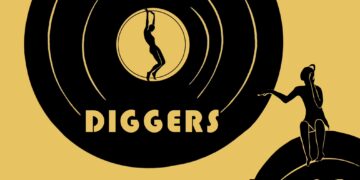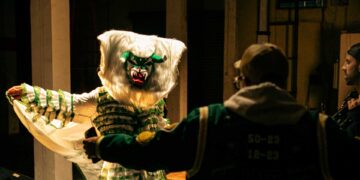Urs Fischer mines the potential of materials—from clay, steel, and paint to bread, dirt, and produce—to create works that disorient and bewilder. Through scale distortions, illusion, and the juxtaposition of common objects, his sculptures, paintings, photographs, and large-scale installations explore themes of perception and representation while maintaining a witty irreverence and mordant humor.
Fischer began his artistic career studying photography at the Schule für Gestaltung in Zurich. He later lived in London and Los Angeles, and shared a studio with Rudolf Stingel in both Berlin and New York. Themes of absence and presence, as well as the processes of art production, pervade his work, in which Fischer makes use of tables, chairs, shadows, and light to explore distortion and anthropomorphism. In Stuhl mit (1995–2001), bulbous, fabric-covered legs merge with a wooden chair, and in Studies for Chairs for Individual Seating Positions (1993), the absence of a human body is suggested by a sawdust and rubber mold draped over the furniture. Food is also a major element in Fischer’s work. Rotting, melting, and crumbling, and placed in juxtaposition with permanent materials like metal, bricks, and mortar, it serves as a memento mori; Rotten Foundation (1998) comprises a brick structure built on a foundation of rotting produce; Untitled (Bread House) (2004–05), a Swiss chalet constructed entirely of loaves of bread, was left to be eaten by parakeets; and in the Problem Paintings (2010–), portraits mounted on aluminum panels are obscured by images of eggs, peppers, and kiwis, as well as twisted bolts and half-smoked cigarettes.
In 2009 Fischer had his first large-scale solo presentation in an American museum, at New York’s New Museum; the exhibition featured a series of immersive installations and hallucinatory environments including cityscapes and mirrored labyrinths. At the Venice Biennale in 2011, his wax copy of Giambologna’s late-sixteenth-century sculpture Rape of the Sabine Women slowly melted, looming over another candle depicting an ordinary man wearing glasses and a sport coat. The candle works, which Fischer has produced since 2001, attest to his mastery of entropy, as well as his simultaneous incorporation and rejection of tradition.
Fischer had his first solo show with Gagosian in 2012. The following year for his exhibition Yes at the Geffen Contemporary at MOCA Los Angeles, 1,400 volunteers produced unfired clay sculptures in the weeks leading up to the exhibition. As soon as Fischer has accomplished one material feat, he embarks on another, in ways that are complicated and playful, messy and perfected.
CHAOS #1–#501 is a collection of 501 unique digital sculptures, released as individual NFTs.
CHAOS #1–#500 consists of two converging objects in motion. Each pair is made of two distinct objects that stay in continuous connection. The two objects are relative in scale to one another. Each object is unique.
The individual objects selected are engineered, cultured or manufactured by humans and sourced from the physical world and transformed into a 3D digital model through 3D scanning.
CHAOS #501 is the cumulation of all of the individual objects from CHAOS #1–#500. In #501 all 1,000 objects from #1–#500 come together decoupled from their original pair and move independently from each other.
A visualization can manifest in any format that is capable of displaying, playing or showing a digital sculpture in motion. They will exist in any space be it virtual, real, or a fusion of the two, now and forever, through current and future technology.
Each NFT is composed of a reference rendering, the data to construct the work in any digital space and a set of instructions.
Special thanks to Director and DOP: Filipe Zapelini – https://filipezapelini.com/
Courtesy Annie Roff






